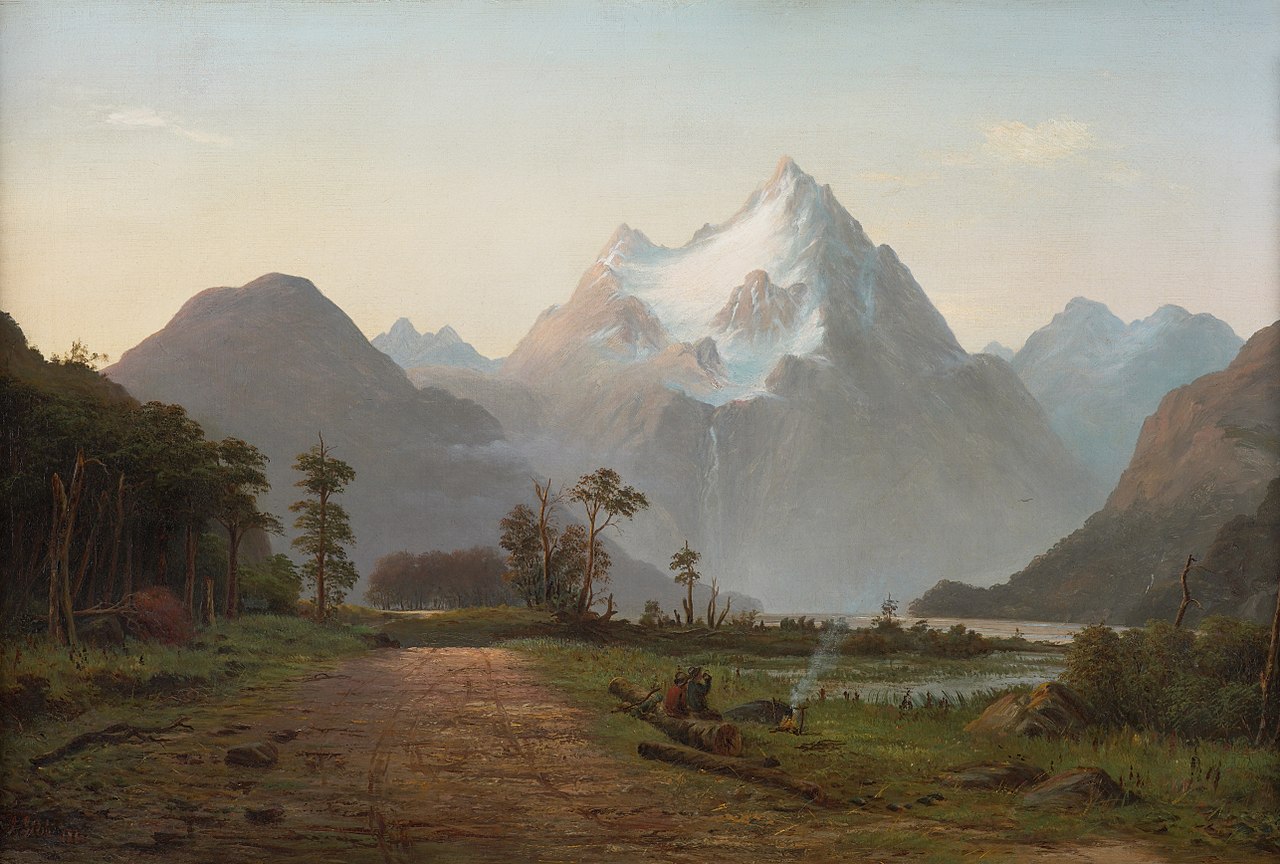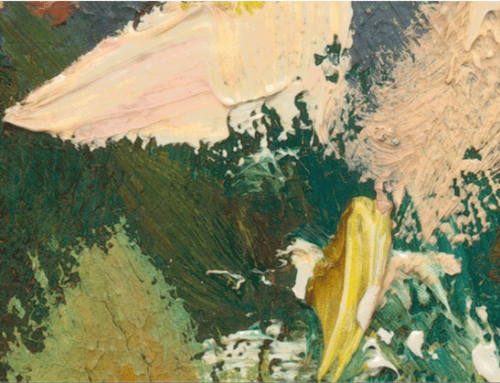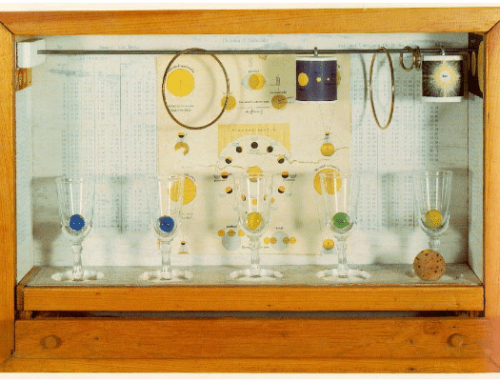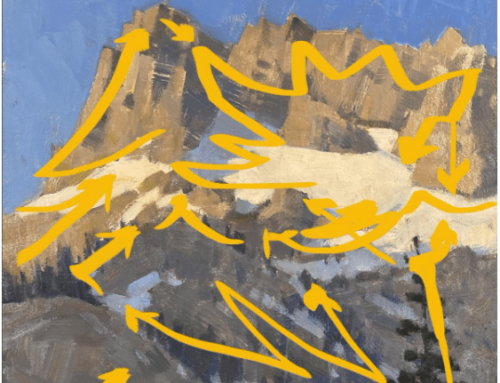This painting’s title is Two Swaggers Boiling a Billy of Tea, Milford Sound. It’s not hard to infer what a “billy” is – a pot for boiling water (or tea, in this case). But what are “swaggers”?
I’ve seen the word swagger used to describe someone swaying back and forth while walking, but this painting’s “two swaggers” are the two characters sitting on the log in the foreground. You almost don’t see them given the beauty of the mountains.
New Zealand is an incredible landscape, and it must be an amazing place to paint. Plein Air Magazine, in fact, is hosting a “Paint New Zealand” trip this September.
Two Swaggers Boiling a Billy of Tea, Milford Sound was painted by John Gibb, who was born in Scotland in 1831 and settled in New Zealand with his second wife after the heartbreaking loss of three daughters to scarlet fever in 1873. He built a house and a studio and began taking students. His studio flourished as his reputation grew through exhibitions in Aukland, Wellington, Australia, and internationally beyond New Zealand.
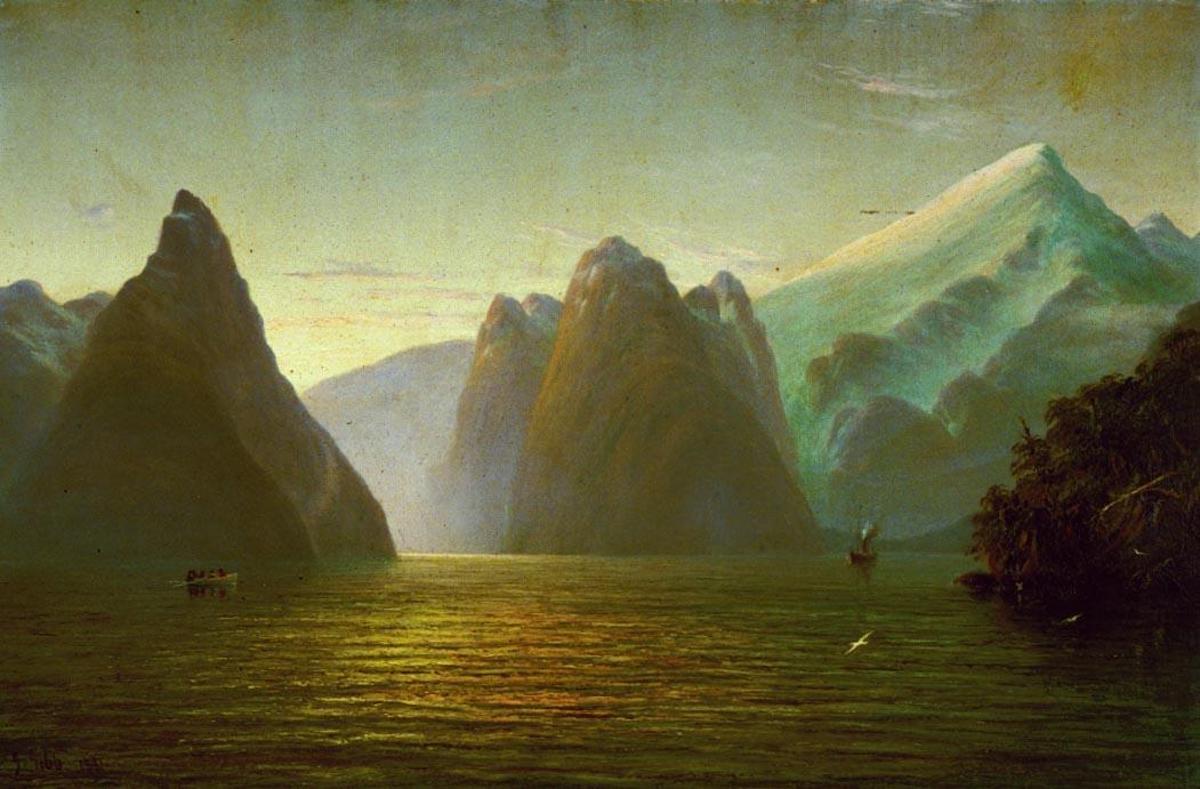
John Gibb, Evening, Milford Sound, 1881
Gibb followed the academic practice of sketching the landscape and gathering information that he later worked up in the studio with intense attention to detail. In later years, as a keen photographer, he regularly used his half-plate camera to good effect as an aide memoire. By the 1880s Gibb was regarded as New Zealand’s major professional marine painter.
As for the “two saggers,” it turns out that in nineteenth-century New Zealand and Australia, a swagger or swagman was someone who travelled around with a swag (a bundle of personal items) on their back. Swagman, then, referred specifically to a homeless wanderer, someone likely to be looking for work in exchange for food and lodging. Other variations from the New Zealand/Australia vocabulary include swaggie and swagsman.
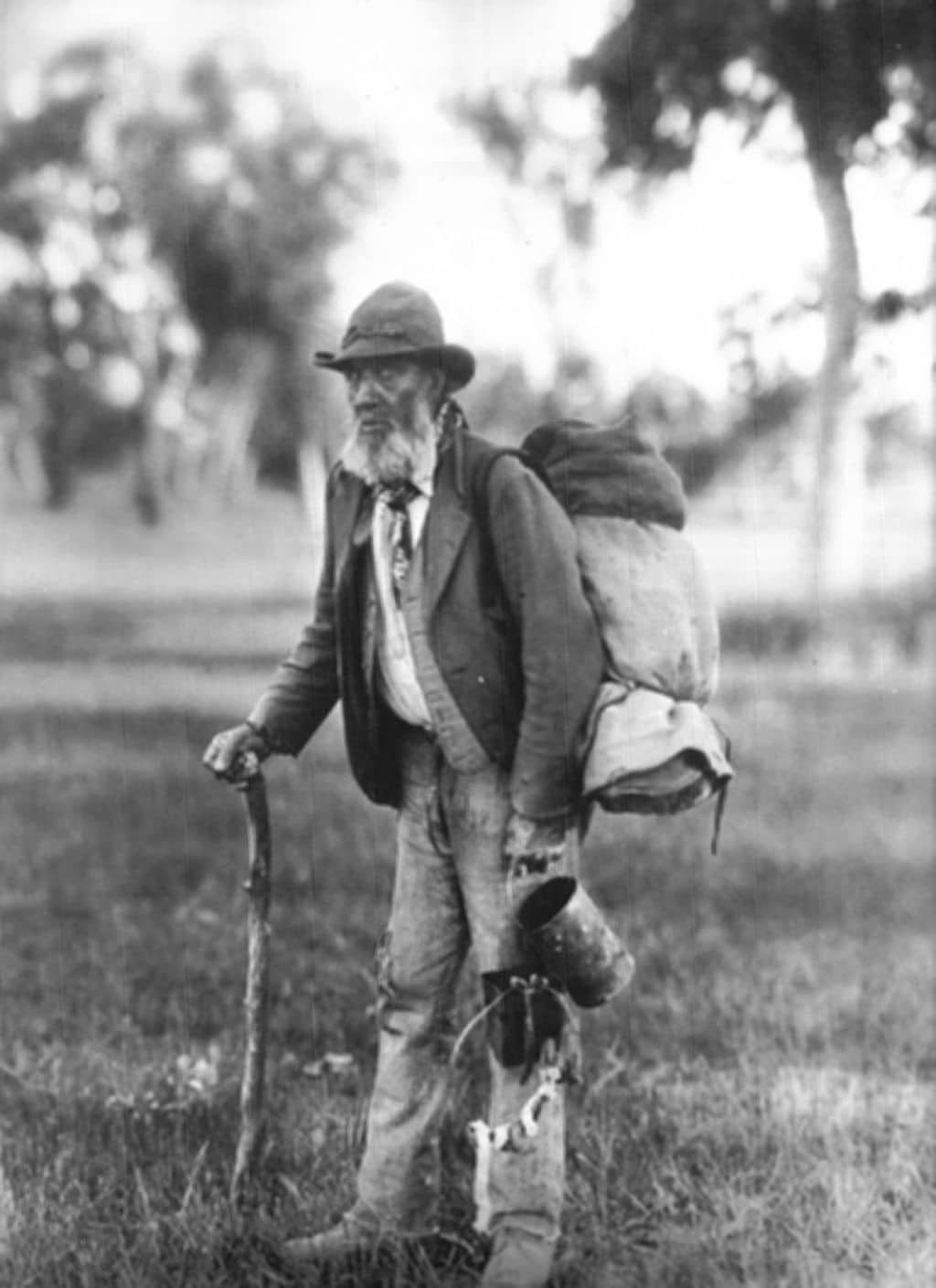
A c. 1901 photograph of a swagman in New South Wales, Australia.
According to Wikipedia, the Milford Sound of Gibbs’s title is a spectacular fjord in the southwest of New Zealand’s South Island. Featuring a dizzying fusion of clear water, sheer cliff-rock, rainforests and waterfalls, the fiord is home to fur seal colonies, penguins, and dolphins. Rudyard Kipling called it the “eighth wonder of the world.” It sounds and looks incredible.
Personally I would not mind spending some time as a swagger sipping tea on a log in a on the banks of a landscape like Gibbs’s Milford Sound.
The familiar verb to swagger, which is something you might see a Hollywood cowboy do, has old Norse roots meaning twist or turn. These days, swag can mean a number of different things, including the company-branded “merch”(i.e. loot) given out for free at corporate-sponsored events and conventions. In seventeenth-century England, swag referred to both stolen goods and to the bag the burglar carried them away in – hence the crossover to the vagabond’s swag (pack) and the extension of the term to the swaggers depicted in Gibb’s painting.
Can you see one million – or ONE HUNDRED MILLION – colors?
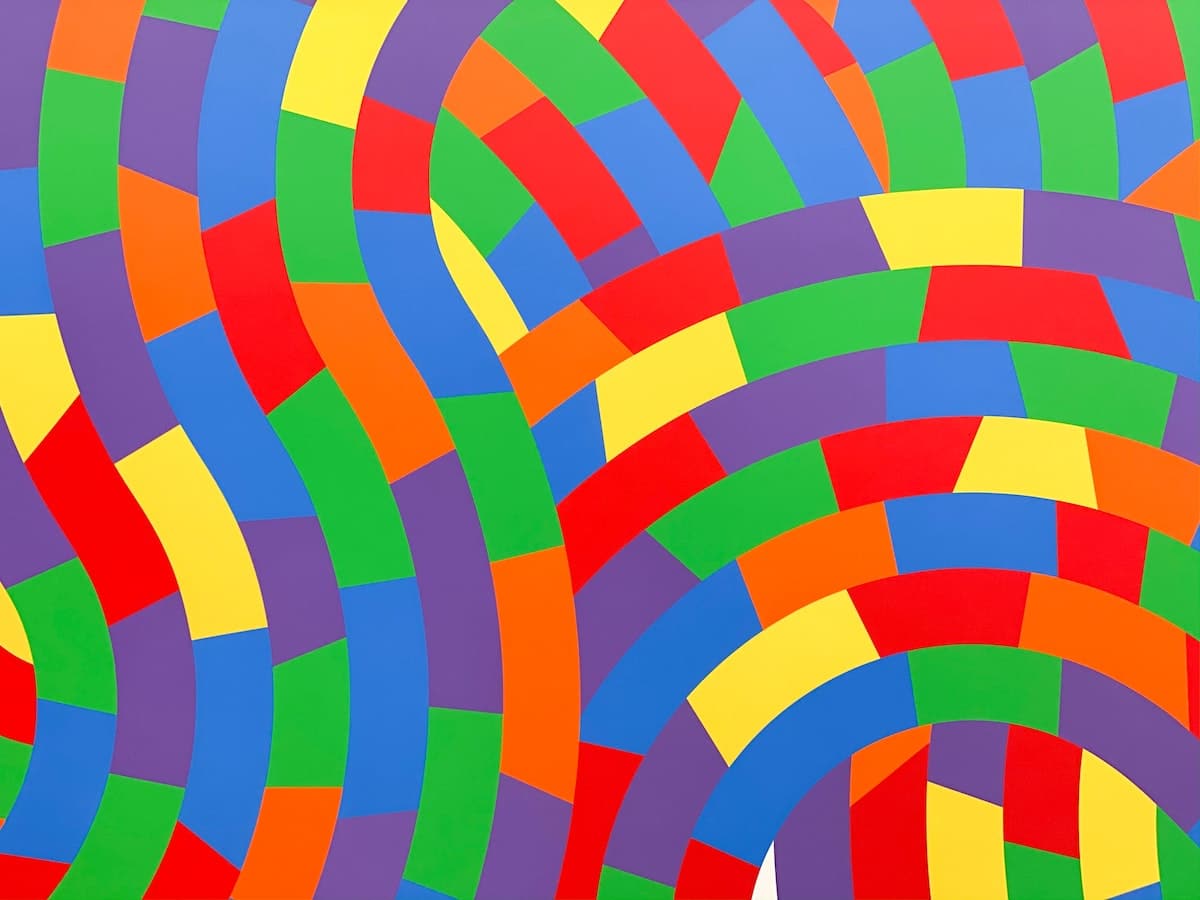
Sol Lewitt, mural at Mass MoCA Way, Northampton, Mass. Photo by Clark Van Der Beken on Unsplash
Artists tend to see color with a creative eye, but it seems that some people can actually see a lot more colors than others.
Preliminary research suggests that a small percentage of people can perceive about 100 million colors, as compared with the roughly one million colors most of us can see, according to this source.
Most of us have three color receptor types (called cones) in our eyes, but some women have four cone types. Scientists call this newly discovered trait tetrachromatic color vision. Evidently, because of how genes are passed on, the condition is likeliest to occur in women with sons or fathers who are color blind. Scientists estimate about 2% of all women have the genetic mutation that results in the extra retina cone.

